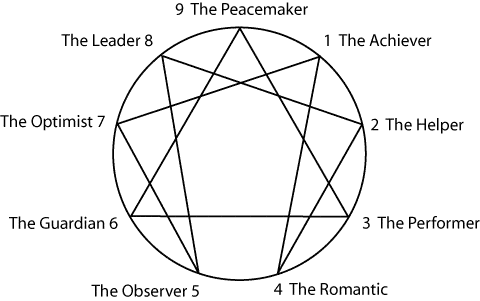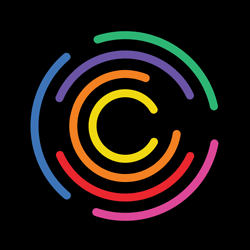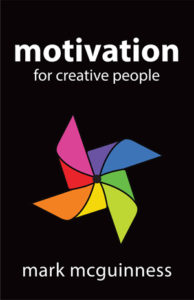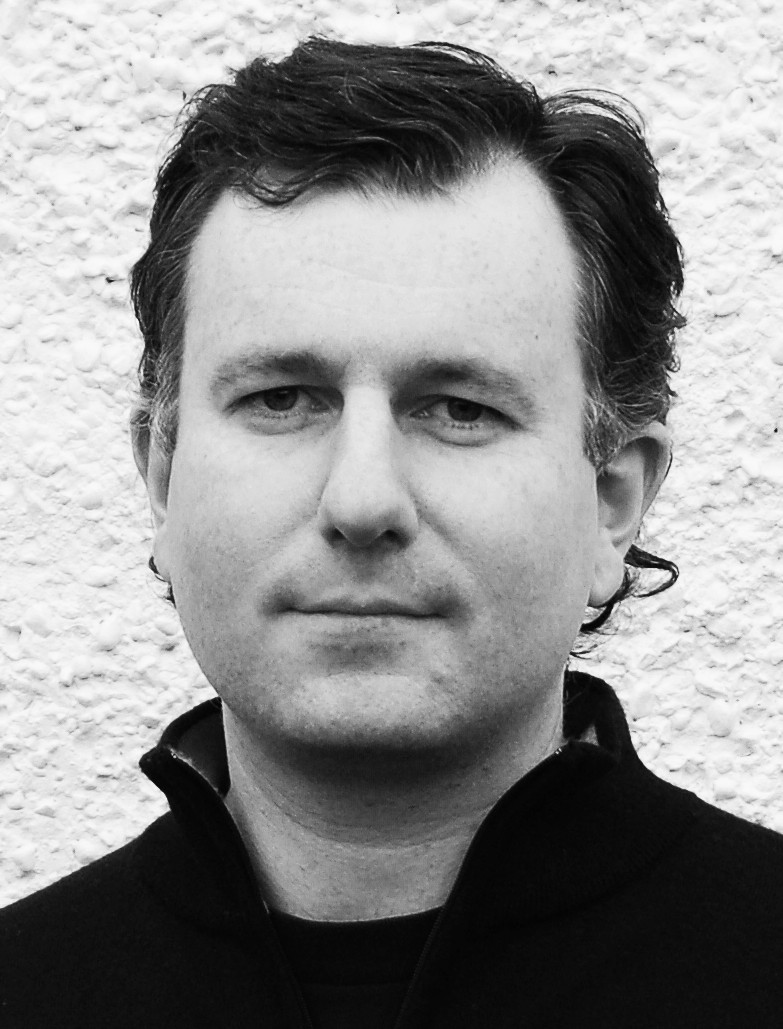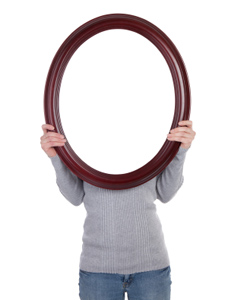
You know who I’m talking about.
In your career you will meet all kinds of influential people — interviewers, bosses, mavens, editors, managers, agents, thought leaders and living legends. People who can open doors for you, or slam them in your face.
And not one of them will exert a fraction of the influence over your career that you do. But who are you, really? And how well do you know yourself?
If you want to influence an influencer, it makes sense to learn everything you can about them — their likes and dislikes, their personality, tastes, strengths and weaknesses. Yet how many of us really stop to consider ourselves, with anything like objective curiosity?
Maybe that’s a scary thought. Maybe the reason why so many of us look to the satisfaction and fulfilment in the external world is that we are afraid of what we might find if we stop and turn our gaze inward. Or maybe we just have a healthy disregard for narcissistic ‘navel gazing’.
It takes a certain amount of courage to look yourself in the eye, without blinking. But it needn’t be a terrifying ordeal. Of course you’ll have to own up to some weaknesses and things you’d rather not admit about yourself. But you may also be pleasantly surprised by some of the things you find.
And you needn’t turn into a self-obsessed egomaniac. Some of the most generous and inspiring people I know are the ones who are also the most self-aware — they’ve got to know some of their blind spots, and avoid thoughtlessly hurting other people’s feelings.
‘Know thyself’ was the famous inscription on the ancient Greek temple of Apollo at Delphi — but how can you do it? Where should you start?
There are many mirrors that will show you different aspects of yourself. Here are a few to get you started. But remember, none of them will give you a final ‘objective’ picture. Only you can put the pieces together.
Introspection
This is the most direct — and probably the most difficult — way of looking at yourself. Sit quietly in a chair, on your own. Close your eyes and pay attention to your inner world — your thoughts, your feelings, and the sensations in your body. It’s all there, right under your nose.
Sit still and pay attention for five minutes (set a timer if you like). Do your best to just observe, without judging or criticising. And if you find yourself judging or criticising, then just observe that!
If you’re like most people, you’ll probably find this exercise maddeningly difficult — even though everything you want to know is right there, tantalisingly close. It’s normal to get lost in your thoughts, or bored, or to want to get up and do something else, or even to fall asleep!
Like I said, it’s very difficult to stare into this mirror for very long. But if you persist, you can be rewarded with very clear insights about yourself — once you’ve really seen a pattern of thought or feeling arising in yourself, then it doesn’t have so much power over you. You realise it’s not really you — just a part of you. You have alternatives.
If you’re curious about following up this route, it’s worth learning some basic mindfulness meditation techniques — see the resources and worksheet.
Talents
Everybody’s good at something. You’ve probably noticed that some things come relatively easily to you, and you enjoy making the most of your strengths. You may have a talent for drawing, cooking, sports, writing, telling jokes, or a thousand and one other things.
One of the most important things you can do for your career is to develop your talents, rather than fixing your weaknesses. If you manage to ‘fix’ all of your weaknesses, you make yourself a more average person — someone who is pretty good at a lot of things. But if you build on your strengths and you can become world-class at one or two things. No prizes for guessing which route has the potential to make you a more remarkable and successful person.
If you’re interested in identifying and developing your talents, have a look at Marcus Buckingham’s book Now, Discover Your Strengths.
Multiple intelligences
Howard Gardner’s theory of multiple intelligences takes the idea of talent a stage further, arguing that the traditional concept of IQ is far too narrow to describe human intelligence, and that in fact we have eight different types of intelligence:
- Spatial – visualization and spatial awareness
- Linguistic – use of spoken or written words
- Logical-mathematical – reasoning and dealing with numbers and abstractions
- Bodily-kinesthetic – movement and dexterity
- Musical – sensitivity to and ability with sounds, rhythms, tones, and music
- Interpersonal – empathy, communication and influencing
- Naturalistic – understanding and relating to the natural world
- Existential – contemplation of ideas beyond physical data and sense impressions (e.g. philosophy, cosmology, mysticism)
If you’ve got this far in the 21st Century Creative, you’ve probably guessed that verbal intelligence is one of my strong suits — I love written and spoken language, which is why I’ve ended up as a poet, coach and podcaster. And learning foreign languages is a treat for me rather than an ordeal. On the other hand, if you’d seen my attempts to learn the guitar you’d agree with me that I don’t have a natural gift for musical intelligence!
You can probably instantly identify with one or two of Gardner’s intelligences, and there’s probably another one or two that are definitely not you! If you want to learn more about them, start with Robyn McMaster’s article The 8 Types of Creative Intelligence. And for the full picture, read Gardner’s book Frames Of Mind: The Theory Of Multiple Intelligences.
Extrovert or introvert?
This is another of those categories that you probably know instinctively. Introverts are most at home with their own company, and find solitude essential in short doses, and relatively easy to bear for extended periods. Extroverts come alive in company, and are much more outgoing and gregarious, seeking out other people and feeling a little lost without them.
It’s not a black-and-white distinction however. Of course introverts enjoy other people’s company, and very few of them would relish the prospect of living alone the rest of their lives. And extroverts don’t spend their whole lives as the life and soul of the party. It’s more a question of where they feel most comfortable.
For example, I’m naturally pretty introverted and would hate to have to commute to a crowded office every day. I’m quite at home in my home office with the computer, the internet and my books. But every week I like to have at least a couple of days where I’m out and about, meeting people face-to-face.
I’ve trained myself to be pretty extrovert when I’m on stage giving a presentation or running a workshop. But I find presenting more tiring than an extrovert would do — so I always make sure I schedule some downtime before and after a speaking event.
Personality
Admit it: you’ve occasionally looked at your horoscope, to see whether you recognise yourself in the description, even if you definitely don’t believe in astrology. The urge to classify ourselves into types is a very old one for human beings. As well as the eastern and western of astrology, ancient human typing systems include the Wu Xing (five-phase) types from Chinese medicine, the three Doshas of Indian Ayurvedic medicine, and the four humours of Greek medicine.
Modern psychology offers us a menu of different personality typing systems. One of the most popular is the Myers Briggs Type Indicator (MBTI), which builds on the theories of Carl Jung, and proposes four basic axes of personality:
- Introversion — Extroversion
- Sensing — Intuition
- Thinking — Feeling
- Judgment — Perception
The idea is that each of us has a natural preference for one side of each dichotomy, and taken together, are preferences make up our MBTI type. For example, if you have a preference for extroversion, sensing, feeling and perception, you will be classified as ESFP. For example, here’s a description of the typical ESFP person.
Another model of personality that has a lot of research data to back it up is the Five Factor Model (a.k.a. the ‘Big Five’ model), which assesses people according to the following criteria:
- Openness to experience
- Conscientiousness
- Extroversion
- Agreeableness (i.e. how compassionate and co-operative you are)
- Neuroticism (a.k.a. emotional stability)
My personal favourite model is the Enneagram, in which the nine points of the Enneagram diagram correspond to 9 basic types:
Image by Sandy Renshaw
To me, it’s the most powerful and practically useful personality typing system I’ve come across. If you want to know more, download my e-book An Introduction to the Enneagram.
Motivations
What gets you out of bed in the morning? Money? Enthusiasm for your work? Hunger? Needing the bathroom? Or fear of the consequences if you’re late for work?
Look around you and you’ll see human beings devoting their lives to pursuing all kinds of weird and wonderful things. Having chosen a creative career, you’ve arguably picked one of the weirdest and most wonderful on the planet! Maybe you have friends or family who don’t really ‘get’ why you do what you do. But for you, you can’t imagine an alternative.
In his book The Rise of the Creative Class, Richard Florida analyses a survey of IT workers’ motivations, conducted by Information Week in 2001. Over 20,000 workers were asked the question ‘What matters most to you about your job?’, and given a choice of 38 different factors. Here are the top 10 factors, as ranked in order of importance by the survey respondents:
- Challenge and responsibility
- Flexibility
- A stable work environment
- Compensation
- Professional development
- Peer recognition
- Stimulating colleagues and managers
- Exciting job content
- Organisational culture
- Location and community
How closely do these answers match your motivations? Would you change the order at all? (If you’re feeling motivated to learn more about motivation, then don’t miss next week’s lesson, when we’ll look at it in more detail.)
Feedback
O wad some Power the giftie gie us
To see oursels as ithers see us!(Robert Burns, ‘Ode to a Louse’)
But we don’t really need divine intervention — other people are giving us feedback every day of our lives, whether we want it or not. You’ve probably heard the same message over and over again, from many different people: you’re ‘bright’, ‘stubborn’, ‘lazy’, ‘charming’, ‘sly’, ‘cheeky’, or whatever. Maybe you’ve resisted the label, and maybe it’s not the whole truth about you. But could all those people really be entirely wrong? Or could there be a grain of truth in what they’re saying?
The spiritual teacher G.I. Gurdjieff said that one of the best ways to get to know ourselves was to notice when we experience friction in our dealings with other people. He encouraged his students to notice what type of people ‘rubbed them up the wrong way’, and to notice what they showed them about their own personality. He even encouraged his students to thank difficult people, because they gave them an opportunity to work on themselves!

We’ve come full circle. It’s just as hard to look at ourselves through the eyes of other people as it is to gaze into our own mind and heart. No one can do this all the time. Maybe seeing ourselves directly would be too much for more than a quick glimpse, like staring straight at the Sun.
But if you make the effort to look at yourself honestly from time to time, even if it’s only briefly, or only through the mirror of a personality test, then you will learn things that no one else can teach you. Things that will stand you in good stead for the rest of your life, not just your career. And who knows, you may even discover that you like what you see. 🙂
Worksheet
Podcast episodes
The following episodes of The 21st Century Creative Podcast touch on the themes of today’s lesson:
Steven Pressfield on The Artist’s Journey
Freeing the Natural Voice with Kristin Linklater
The Successful Creative Mindset with Joanna Penn
The Floatation Tank – a Short Cut to Your Superpower? with Nick Dunin
DIY Professional Development for Creatives with Gabriela Pereira
Other resources
Written by me, unless otherwise indicated
Who Are You?: 101 Ways of Seeing Yourself by Malcolm Godwin. Superb compendium of personality types, archetypes, body types etc.
Introspection
What Daily Meditation Can Do for Your Creativity
How Getting Nothing Done Can Make You More Productive
An Introduction to Insight Meditation – a free guide from the monks at Amaravati Buddhist Monastery, where I have attended several retreats.
Meditation Now or Never by Steve Hagen. If you want to take up regular meditation practice, this is the best guide I’ve come across.
Talents
Now, Discover Your Strengths by Marcus Buckingham and Donald O. Clifton
Multiple Intelligences
Multiple Intelligences FAQ by Howard Gardner. Download the free pdf on this page for a good introduction to Multiple Intelligences.
Free test: Find Your Strengths
Free test: Howard Gardner’s Multiple Intelligences Read an introduction to multiple intelligences and scroll down for a free test.
Frames Of Mind: The Theory Of Multiple Intelligences by Howard Gardner
Extrovert / Introvert
Free test: Introvert / Extrovert
Introvert and Extrovert Personality Test: Are You an Innie or an Outie?
Personality
(a) Myers-Briggs Type Indicator (MBTI)
Free Myers-Briggs Test: What Is Your Myers-Briggs Personality Type? N.b. This is not the official test.
Free Jung Personality Test. Remember, the MBTI is based on Jung’s work. This isn’t the official test either.
The Official Myers-Briggs Type Indicator Test. Requires a fee.
(b) Big Five Model
Free Personality test (BBC Website)
Free Big Five Personality Test
(c) The Enneagram
An Introduction to the Enneagram – My free ebook.
The Enneagram: Understanding Yourself and the Others In Your Life by Helen Palmer. One of my favourite books on the subject.
Free Enneagram test: Abbreviated RHETI Test
Motivation
Motivation for Creative People – My book.
Feedback
How to Deal with Stinging Criticism by Cynthia Morris
6 Tips for Dealing with Feedback on Your Creative Work – most of this also applies to feedback on your personality and behaviour!
Tune in next week …
… When we’ll look at the critical impact of motivation on your creativity and your career.
About The 21st Century Creative
Copyright © Mark McGuinness 2010-2019

